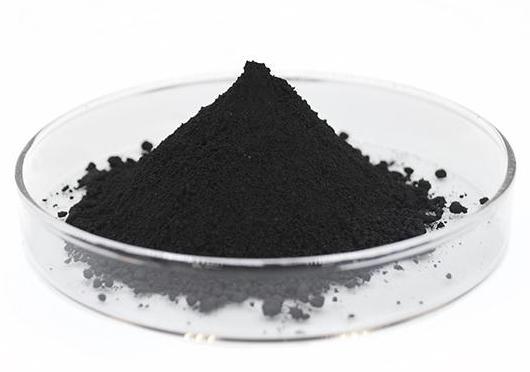Zirconium diboride (ZrB2) is an attractive material with excellent performance in high temperature, hardness, corrosion resistance, and conductivity, making it highly anticipated in materials science.
1. Properties of zirconium diboride
Zirconium diboride is a new type of ceramic material with excellent properties, and its basic units are boron and zirconium. This material has a high melting point, hardness, good conductivity, and high-temperature stability. The crystal structure of zirconium diboride is hexagonal, which has excellent thermal shock resistance and chemical stability. In addition, due to its lightweight and high strength, zirconium diboride also has broad application prospects in aerospace.
Zirconium diboride is a chemical substance with the molecular formula ZrB2—a gray hard crystal in nature. Zirconium borate has three components: zirconium diboride, zirconium diboride, and zirconium diboride. Only ZrB is stable over a wide temperature range. In industrial production, zirconium diboride is mainly used. Zirconium diboride is a hexagonal crystal form, gray crystalline or powder, with a relative density 5.8 and a melting point of 3040 ℃. High temperature resistance and high strength at both room and high temperatures. Good thermal shock, low and oxidation resistance at high temperatures. With metallic luster. The opposition is slightly lower than that of zirconium metal. Stable ZrB2 over a wide temperature range after heating. Although the melting points is high, it can be sintered at lower temperatures and made by mixing zirconium metal with boron carbide and boron nitride and heating them in an argon gas stream to 2000 ℃.

2. Synthesis method of zirconium diboride
Currently, the primary methods for synthesizing zirconium diboride include powder metallurgy and melt quenching. The powder metallurgy method involves mixing boron powder and zirconium powder in a proportion and then high-temperature sintering to obtain dense zirconium diboride material. The law of rapid cooling of melts is to rapidly cool the melts of boron and zirconium at high temperatures to get zirconium diboride powder. Both methods can obtain high-purity zirconium diboride, but the specific plan depends on the required material's performance and the application scenario.
3. Application of zirconium diboride
Zirconium diboride can be used as high-temperature resistant materials for aerospace, wear-resistant and smooth solid materials, cutting tools, temperature thermocouple protection tubes, and electrode materials for electrolytic melting compounds. It is especially suitable for use as a surface for rolling bearing balls.
High-temperature structural materials: Due to their excellent high-temperature performance and corrosion resistance, zirconium diboride has become an ideal choice for high-temperature structural materials. In aerospace, the demand for high-temperature structural materials is also becoming increasingly urgent due to the continuous increase in engine operating temperature. Zirconium diboride has been widely used in manufacturing high-temperature components such as combustion chambers and nozzles in aircraft engines due to its excellent performance.
Electronic equipment: The conductivity and stability of zirconium diboride make it widely used in electronic equipment. For example, zirconium diboride can be a heat-dissipation material for electronic devices and insulation in high-temperature circuits. In addition, its excellent corrosion resistance also makes it have good application prospects in electronic equipment in marine environments.
Fuel cells are an efficient and environmentally friendly energy conversion device that typically operates at high temperatures. Zirconium diboride is widely used as an electrode and separator material for fuel cells due to its high-temperature stability and corrosion resistance. In addition, zirconium diboride can also serve as a catalyst carrier for fuel cells, improving fuel utilization and battery efficiency.

Biomedical engineering: Zirconium diboride's biocompatibility and excellent mechanical properties make it widely used in biomedical engineering. For example, zirconium diboride can be a manufacturing material for medical devices such as artificial joints and dental implants. In addition, zirconium diboride can also serve as a drug carrier to achieve targeted delivery and release of drugs.
As an excellent ceramic material, Zirconium diboride has shown broad prospects in applications such as high-temperature structural materials, electronic devices, fuel cells, and biomedical engineering. With the continuous development of science and technology, in-depth research on the properties and applications of zirconium diboride will further promote its Application in more fields. At the same time, improving synthesis methods and optimizing material properties can better meet practical applications' needs, bringing more convenience and benefits to human production and life.
High-quality Zirconium diboride powder supplier
TRUNNANO is a trusted global chemical materials supplier and manufacturer with over 12 years of experience in ultra-high quality nanomaterials and chemicals. The company develops a variety of powder materials and chemicals. Provide OEM services. If you are looking for Zirconium diboride powder, please contact us. You can click on the product to contact us.